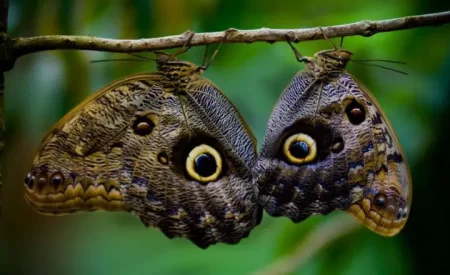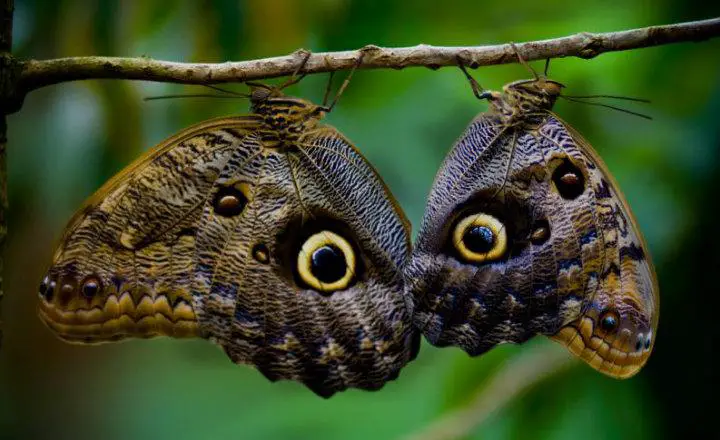Example of Mimicry In Animals.Some animals have certain shapes and colors that are confused with the environment in which they live or with other organisms. Some are even capable of changing their color and taking on various forms. Through mimicry, organisms are capable of deceiving other animals with which they live in the same habitat, mainly their predators, confusing their senses of sight, hearing and smell, and sometimes even inducing certain behaviors in them.
10 Most Shocking Example of Mimicry In Animals.

1. Chameleon, the best-known case of animal mimicry
Of the animals that camouflage themselves, it is the most famous. The chameleon has the ability to change the pigmentation of its skin taking into account the light and colors that exist in its environment. It achieves this thanks to its pigment cells, which act like crystals, allowing them to change color.
2. Madagascar Gecko
It lives in the trees and only comes down to lay eggs. They look similar to the leaves of the trees, so they can blend in with the environment in which they live. He is a true master of camouflage and uses this technique to defend himself against predatory species in his environment.
3. Stick Insect
We cannot talk about animal mimicry without talking about the stick insect. It is an elongated stick-like insect. Some species have wings and live in bushes and trees. The camouflage property of this peculiar animal allows it to hide among the vegetation to protect itself from predators during the day. Instead, at night they come out to eat and mate.
4. Dried Leaf Butterfly
Its wings resemble brown leaves and are camouflaged with the leaves of the trees to escape the threat of birds that want to eat them. Considering that some butterflies are endangered , those that can camouflage themselves have a better chance of surviving.
5. Owls
These nocturnal birds of prey camouflage themselves thanks to their plumage, which is similar to that of the bark of the trees where they rest. There is a great multitude of varieties of owls and each one has its own characteristics adapted to its place of origin.
6. The animal mimicry of cuttlefish
In the seas and oceans there are many animals that are perfectly camouflaged. The cuttlefish is a cephalopod that blends in with any ocean floor, since its skin cells can change their color to adapt and go unnoticed.
7. Ghost Mantis
The camouflage of this animal gives it a dry leaf appearance that helps it to disappear very easily from its predators. It is practically impossible to distinguish from the leaves of the trees.
8. Pygmy Seahorse
It hides in marine corals, with which it shares color. It goes so unnoticed that it was a species that took a long time to be identified. In addition to being one of the animals that camouflage, it is one of the smallest animals in the world and is usually found in Indonesia.
9. Blue-ringed octopus, an animal with great power of mimicry
Its skin is yellowish and it goes completely unnoticed between rocks and ocean floors, until it feels attacked when it comes into contact with another animal. Then, they change color rapidly, displaying their brilliant blue rings. This intense color is due to the presence of certain toxic bacteria, which release a powerful poison.
10. Arctic fox
Another of the most amazing cases of animal mimicry. In this case, the arctic polar fox is an animal that camouflages itself only in certain seasons. During the winter months, it has thick, white fur that allows it to survive low temperatures, as well as go unnoticed by its prey and get close to them. Come spring, its coat changes drastically to a grayish-brown coloration and less hair density, camouflaging with the scrubby prairies that persist through summer and early fall.
